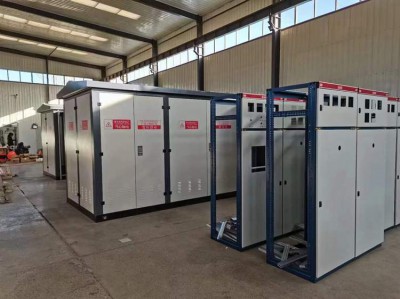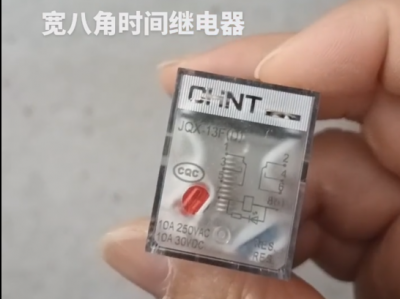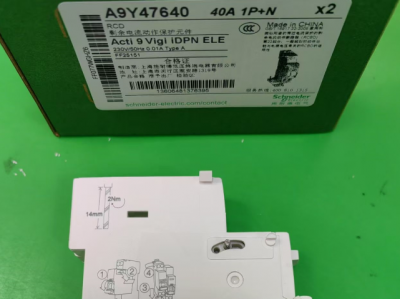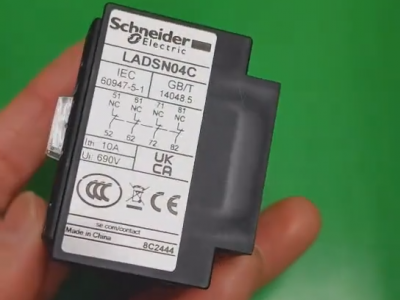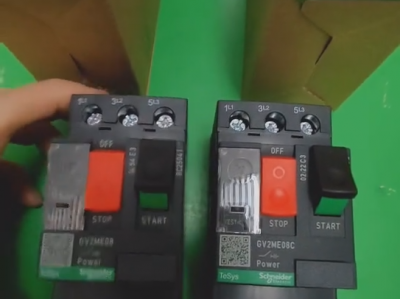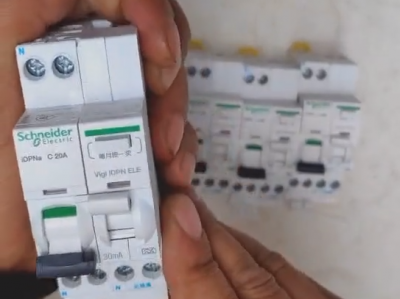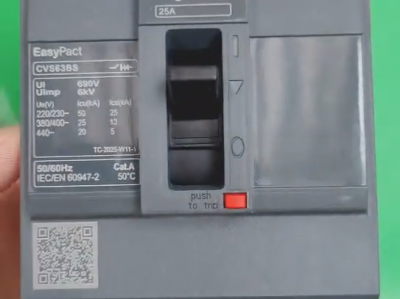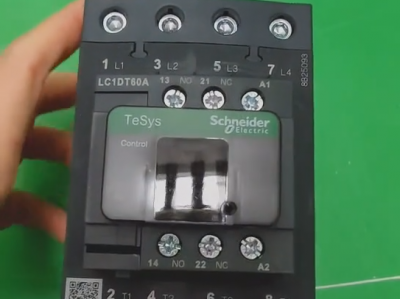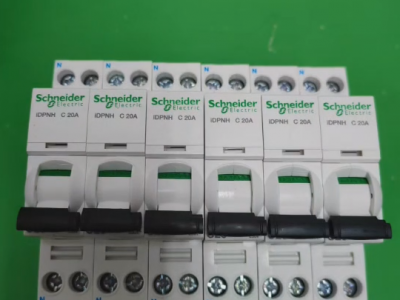Siemens 6ES7 288-3AM06-0AA0
Product description

According to the Siemens product naming rules, the model **6ES7 288-3AM06-0AA0** belongs to the analog output module of the **SIMATIC S7-200 SMART series**. The detailed information of this module is as follows:
1. Basic Product Information*Siemens S7-1200 series PLC
- **Series**: S7-200 SMART expansion module
- **Type**: Analog Output Module
- **Ordering Number**: 6ES7 288-3AM06-0AA0
- **Abbreviation**: EM AM06 (It may be identified by this abbreviation in some materials)
2. Core Functions and ParametersSiemens 6ES7253-1AA22-0XA0 (EM253)
Channel SpecificationsSiemens 6ES7235-0KD22-0XA0*
- **Number of Output Channels**: 2 analog output channels (Note: The "06" in the model may be easily misinterpreted. In the actual AM series modules of S7-200 SMART, AM06 does not refer to the number of channels. It should be subject to the official data. For typical similar modules, such as **AM03** which has 2AI+1AO, **AM06** may have **2 independent analog output channels**, and it needs to be confirmed in combination with the manual).
- **Output Signal Types*Siemens 6ES7231-5QA30-0XB0 module*:
- Voltage: ±10V, 0-5V, 0-10V, 1-5V
- Current: 0-20mA, 4-20mA
- **Output Precision*6ES7142-5AF00-0BA0 Siemens*:
- Voltage mode: 12-bit resolution
- Current mode: 11-bit resolution
Electrical CharacteristicsSiemens 1FL6034-2AF21-1LH1 Servo Motor*
- **Power Supply**: Powered by the S7-200 SMART CPU through the expansion bus (no additional power module is required).
- **Isolation Characteristics**: The channels are not isolated, and the module is isolated from the CPU (enhanced anti-interference ability).
Communication and ConnectionSiemens converter 6SE6440-2UD42-0GA1
- **Connection with CPU**: Directly connect to the CPU or other expansion modules (such as signal boards, signal modules) through the expansion bus interface on the side of the module.Siemens V20 Inverter 15KW of Model 6SL3210-5BE31-5UV0*
- **Wiring Method**: Terminal block wiring, and detachable terminals are supported (convenient for maintenance).
3. Application Scenarios
- **Industrial Control**: Suitable for scenarios requiring analog output, such as adjusting the frequency of frequency converters, controlling servo drivers, driving analog signal sensors, etc.Chint converters (NVF2G-18.5/TS4 or NVF2G-18.5/PS4*
- **System Expansion**: Used in conjunction with S7-200 SMART CPUs (such as ST20, ST30, SR40, etc.) to expand the analog control capability of the system.
4. Installation and ConfigurationSiemens 6EP1 252-0AA01 chain power supply
- **Installation Method**: Rail installation (DIN rail, in line with IEC standards).
- **Programming Software**: Use **STEP 7-Micro/WIN SMART** for configuration and programming, and intuitive wizard configuration of output signal types and ranges is supported.
5. Precautions
- **Compatibility**: Only applicable to S7-200 SMART series CPUs, and cannot be used mixedly with the S7-200 classic series or other Siemens PLC series.
- **Signal Range Setting**: The output signal type needs to be set through software or hardware configuration (such as the range card) on the module to ensure matching with external devices.
- **Manual Inquiry**: Due to possible slight differences in different versions of the module, it is recommended to download the **product manual of 6ES7 288-3AM06-0AA0** from the official Siemens website to obtain the latest technical parameters and wiring diagrams.
Summary
This module is a key component for realizing analog output control in the S7-200 SMART system. It is suitable for small and medium-sized automation systems, supports multiple standard analog signal outputs, has flexible configuration, and is easy to integrate. For more detailed technical parameters (such as dimensions, power consumption, certification information), it is recommended to visit the official Siemens Industrial website or contact the supplier to obtain official materials.
Specific Technical Parameters of Siemens 6ES7 288-3AM06-0AA0
The following are the specific technical parameters of Siemens **6ES7 288-3AM06-0AA0** (SIMATIC S7-200 SMART analog input/output module EM AM06), sorted out based on official manuals and reliable technical materials:
1. Core Electrical Parameters
- **Channel Specifications**:
- **Analog Input (AI)**: 4 channels, supporting voltage/current signals
- **Analog Output (AO)**: 2 channels, supporting voltage/current signals
- **Input Signal Types**:
- **Voltage**: ±10V, ±5V, ±2.5V, 0-5V, 0-10V, 1-5V
- **Current**: 0-20mA, 4-20mA
- **Output Signal Types**:
- **Voltage**: ±10V, 0-10V
- **Current**: 0-20mA, 4-20mA
- **Resolution**:
- **Input**: 12-bit (voltage mode) / 11-bit (current mode)
- **Output**: 11-bit (voltage/current mode)
- **Precision**:
- **Voltage Input**: ±0.3% FS (typical value)
- **Current Input**: ±0.6% FS (typical value)
- **Voltage Output**: ±0.5% FS (typical value)
- **Current Output**: ±0.5% FS (typical value)
2. Power Supply and Power Consumption
- **Power Supply**:
- **Backplane Bus**: DC 5V (powered by the CPU, typical current 80mA)
- **External Power Supply**: DC 24V (-15%/+20%, typical current 60mA)
- **Power Loss**: Approximately 2W (no-load)
3. Physical Characteristics
- **Dimensions**: 45mm (width) × 100mm (height) × 81mm (depth)
- **Weight**: Approximately 173.4g
- **Installation Method**: 35mm DIN rail installation (in line with IEC 60715 standard)
4. Signal Processing and Isolation
- **Input Impedance**:
- **Voltage Mode**: 9MΩ (±10V/±5V/±2.5V range)
- **Current Mode**: 250Ω (0-20mA range)
- **Output Load**:
- **Voltage Output**: ≥1kΩ (minimum value)
- **Current Output**: ≤500Ω (maximum value)
- **Isolation Characteristics**:
- **Between Channels**: Not isolated
- **Module and CPU**: Isolated (500V AC, 1 minute)
5. Environmental Conditions
- **Operating Temperature**: 0°C to +55°C (standard), and some materials mention an extended temperature range of -25°C to +60°C (needs to be confirmed in combination with the manual)
- **Storage Temperature**: -40°C to +70°C
- **Humidity**: 5% to 95% (no condensation)
- **Protection Level**: IP20 (dust-proof, protection against vertical dripping water)
6. Certification and Compliance
- **CE Certification**: Complies with the EU Low Voltage Directive (LVD) and Electromagnetic Compatibility (EMC) standards
- **RoHS Certification**: Complies with the EU RoHS environmental protection directive
- **Other Certifications**: Some suppliers mention the 3C certification (China), but the UL/cUL certification is not clear (needs to contact the official for confirmation)
7. Diagnosis and Communication
- **Diagnosis Function**:
- Power supply voltage monitoring, disconnection detection, short-circuit protection
- LED status indicator lights (input/output status)
- **Communication Interface**: Directly connect to the S7-200 SMART CPU through the expansion bus, and programming with STEP 7-Micro/WIN SMART is supported
8. Wiring and Configuration
- **Terminal Type**: Detachable spring terminals (supporting 0.2-1.5mm² wires)
- **Signal Range Setting**: Configured through software or a hardware range card
- **Filter Level**: Parameterizable (1x, 4x, 16x, 32x cycle time)
9. Compatibility
- **Applicable CPUs**: Only supports the S7-200 SMART series (such as SR20, ST30, CR40, etc.), and cannot be used mixedly with the S7-200 classic series
- **Expansion Capacity**: A single CPU supports a maximum of 8 expansion modules
10. Typical Applications
- **Industrial Control**: Frequency adjustment of frequency converters, servo drive control, analog sensor signal processing
- **Process Automation**: Monitoring and adjustment of analog quantities such as temperature/pressure/flow
- **Small and Medium-sized Systems**: Realize human-machine interaction in conjunction with the SMART LINE touch screen
Precautions
1. **Channel Matching**: The input/output signal types need to be strictly matched with external devices to avoid overloading.
2. **Wiring Specification**: Shielded cables should be used for analog signals, and keep away from power lines to reduce interference.
3. **Firmware Update**: It is recommended to download the latest manual from the official Siemens website to confirm the compatibility of the module and CPU firmware versions.

